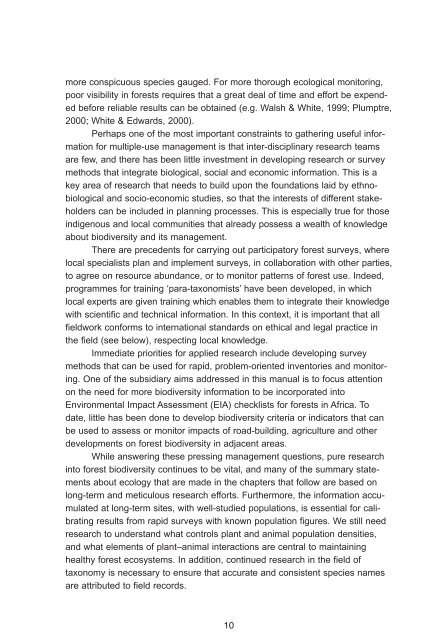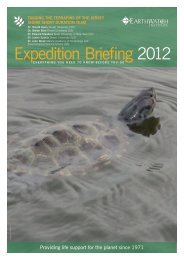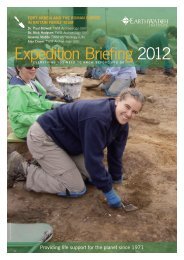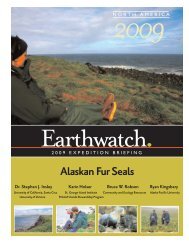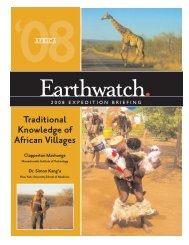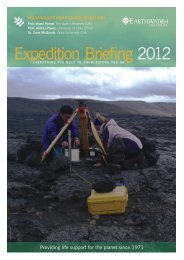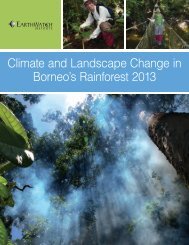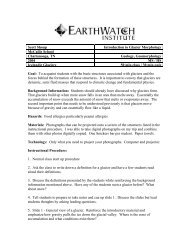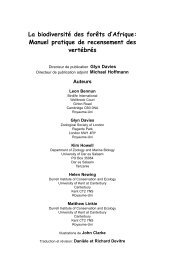African Forest Biodiversity - Earthwatch Institute
African Forest Biodiversity - Earthwatch Institute
African Forest Biodiversity - Earthwatch Institute
Create successful ePaper yourself
Turn your PDF publications into a flip-book with our unique Google optimized e-Paper software.
more conspicuous species gauged. For more thorough ecological monitoring,<br />
poor visibility in forests requires that a great deal of time and effort be expended<br />
before reliable results can be obtained (e.g. Walsh & White, 1999; Plumptre,<br />
2000; White & Edwards, 2000).<br />
Perhaps one of the most important constraints to gathering useful information<br />
for multiple-use management is that inter-disciplinary research teams<br />
are few, and there has been little investment in developing research or survey<br />
methods that integrate biological, social and economic information. This is a<br />
key area of research that needs to build upon the foundations laid by ethnobiological<br />
and socio-economic studies, so that the interests of different stakeholders<br />
can be included in planning processes. This is especially true for those<br />
indigenous and local communities that already possess a wealth of knowledge<br />
about biodiversity and its management.<br />
There are precedents for carrying out participatory forest surveys, where<br />
local specialists plan and implement surveys, in collaboration with other parties,<br />
to agree on resource abundance, or to monitor patterns of forest use. Indeed,<br />
programmes for training ‘para-taxonomists’ have been developed, in which<br />
local experts are given training which enables them to integrate their knowledge<br />
with scientific and technical information. In this context, it is important that all<br />
fieldwork conforms to international standards on ethical and legal practice in<br />
the field (see below), respecting local knowledge.<br />
Immediate priorities for applied research include developing survey<br />
methods that can be used for rapid, problem-oriented inventories and monitoring.<br />
One of the subsidiary aims addressed in this manual is to focus attention<br />
on the need for more biodiversity information to be incorporated into<br />
Environmental Impact Assessment (EIA) checklists for forests in Africa. To<br />
date, little has been done to develop biodiversity criteria or indicators that can<br />
be used to assess or monitor impacts of road-building, agriculture and other<br />
developments on forest biodiversity in adjacent areas.<br />
While answering these pressing management questions, pure research<br />
into forest biodiversity continues to be vital, and many of the summary statements<br />
about ecology that are made in the chapters that follow are based on<br />
long-term and meticulous research efforts. Furthermore, the information accumulated<br />
at long-term sites, with well-studied populations, is essential for calibrating<br />
results from rapid surveys with known population figures. We still need<br />
research to understand what controls plant and animal population densities,<br />
and what elements of plant–animal interactions are central to maintaining<br />
healthy forest ecosystems. In addition, continued research in the field of<br />
taxonomy is necessary to ensure that accurate and consistent species names<br />
are attributed to field records.<br />
10


